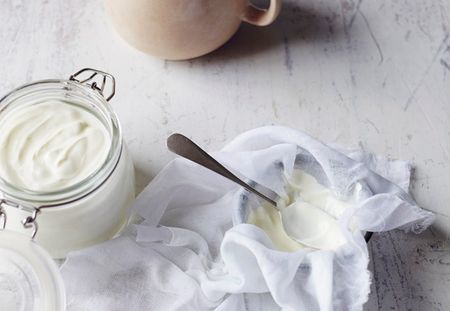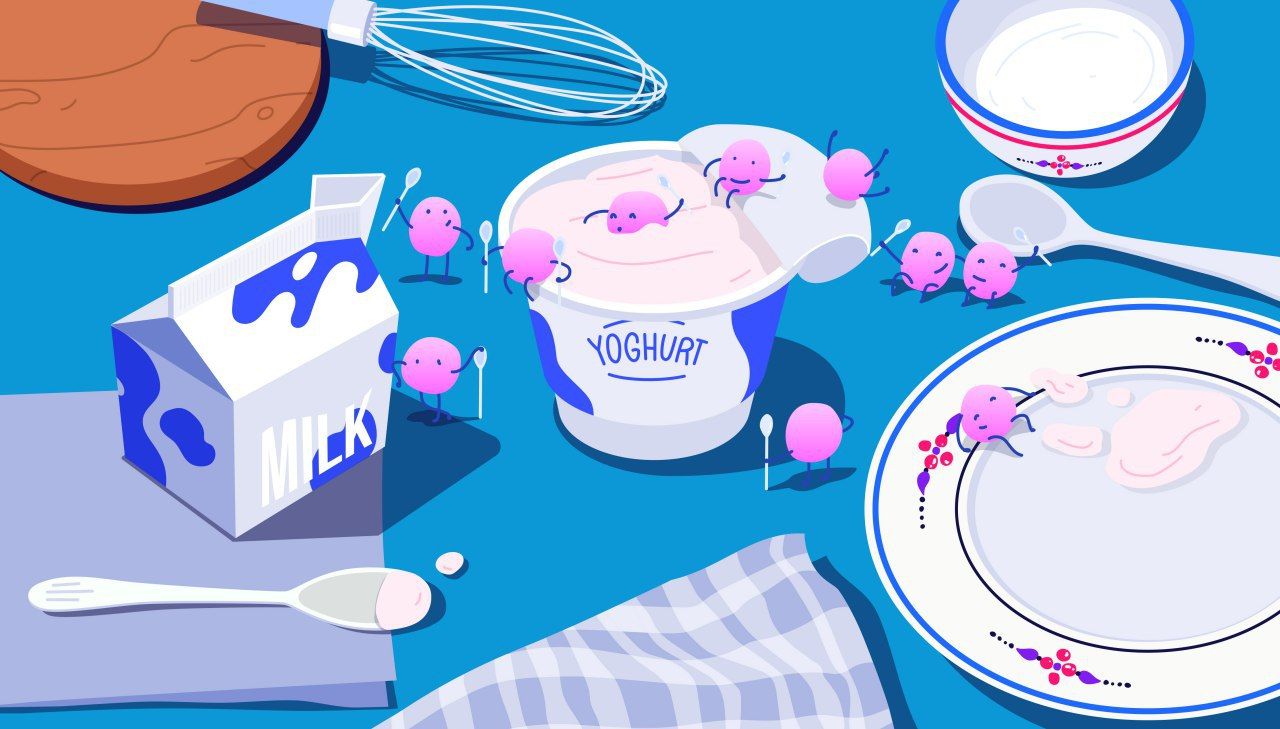Award-winning cookbook author, Vanessa Kimbell, shares her incredibly simple recipe for homemade live yoghurt with just 2 ingredients.
Yoghurt is a cultured food, it is milk fermented through an inoculation of lactic acid bacteria. These bacteria both pre-digest the milk and have a thickening effect, while producing the lactic acid that creates that recognisable, delicious yoghurty tang.
Probiotic foods contains live bacterial cultures that support functions of the gut microbiome, including the synthesis of vitamins and short-chain fatty acids, activities of the immune system and protection against a number of digestive symptoms and which is central to good digestion and a healthy immune system.
You have probably read that probiotics are good for you. These foods containing live bacterial cultures that for some of us potentially have beneficial effects on our health. So for people probiotics can be used to support their gut microbiome, which is central to good digestion and a healthy immune system.
Not all yoghurts contain probiotics. You need to look for the words ‘contains live cultures’ on the pot, which indicates the yoghurt contains live microbes. There are a range of friendly bacteria found in yoghurts, including Lactobacillus acidophilus, L. casei, L. bulgaricus, Streptococcus thermophilus and Bifidobacterium species.
FACT ☝️ Even if probiotic bacteria die in the stomach, they still have benefits for your gut
Although the effects of probiotics on our health have yet to be fully explored, we have some indication of their benefits from studies. Bifidobacterium cultures, when eaten as part of a balanced diet, have been found to reach the gut where they were associated with a reduced frequency of general digestive malaise. The key thing though is to enjoy probiotic yoghurts as part of a healthy, diverse diet.
I tend to find that un-homogenised milk makes thicker yogurt and for those people who don’t benefit so much from the probiotic effects, it is still nevertheless delicious served with a good dollop of blackcurrant jam.
Ingredients
1 litre un-homogenised whole milk
6 tablespoons (2-3 organic live plain whole-milk yogurts, ideally organic)

Photo by Laura Edwards
How to make probiotic yoghurt
Step 1
Pour the milk into a saucepan and put the pan over a low heat. Stir gently, watching it carefully, until the temperature reaches 91C, which is just below boiling point. Then remove from the heat and leave until the temperature falls to 46C.
Step 2
Pour the milk into a warm sterilised bowl. Whisk in the live yogurt and the bacteria will start to work on the fresh milk and convert it into yogurt. Cover the bowl with a clean tea towel and place it somewhere warm overnight. An airing cupboard or a shelf above a radiator is fine, or alternatively, you can pour it into a warmed, wide-mouthed Thermos flask and seal.
Step 3
If the yogurt is still runny in the morning, leave it wrapped up in the warm for another couple of hours. When it is the right thickness, transfer it to a sterilised container with a lid and store in the fridge; a large glass jar is ideal. Homemade yogurt is not as thick as commercially produced yogurt, so to get a thicker Greek-style set, strain it through a muslin-lined sieve over a bowl for a few hours.
REMEMBER ☝️ The yogurt will keep for up to two weeks in the fridge and you can use some of it to make your next batch
Recipe by Vanessa Kimbell, originally published in Food for Thought (2015) by Kyle Books.



















